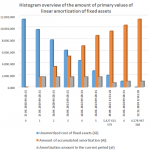Zvonimir Lušić , Nenad Leder, Danijel Pušić, Rino Bošnjak
University of Split (Croatia)
https://doi.org/10.53656/ped21-7s.03infl
Abstract The Port of Split is located in the central part of the eastern Adriatic and is the largest Croatian passenger port. The Port of Split consists of the North Port, for the reception of mainly cargo ships, and the City Port for the reception of passenger ships. Although the port is protected from the open part of the Adriatic by a number of islands, its specific spatial position as well as local hydro-meteorological factors, primarily wind, can significantly affect the safety of navigation, and ultimately close all traffic. The entrance to the City Port is facing to the south; accordingly, the effect of southerly winds and waves will be one of the primary factors influencing the safety of manoeuvring. Also, the wider area of Split is characterized by the strong local, approximately NE wind with sudden gusts (‘’Bura’’) which is especially dangerous for navigation. This paper analyses the effect of significant hydro-meteorological factors on the safety of manoeuvring at the approach and within the City Port of Split. The influence of wind, waves, sea current, tides and visibility will be analysed. Also, these factors will be classified in order of importance with respect to those parts of the port where they predominate as a threat to manoeuvring safety. The obtained results should serve as a basis for future defining of limiting working/manoeuvring conditions.
Keywords: city port of Split; ship manoeuvring; wind, waves; sea currents


